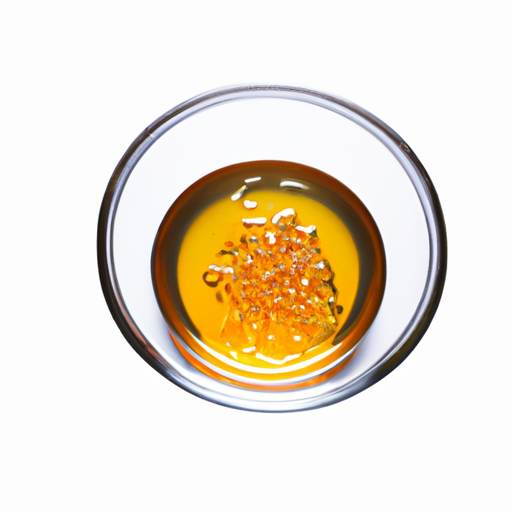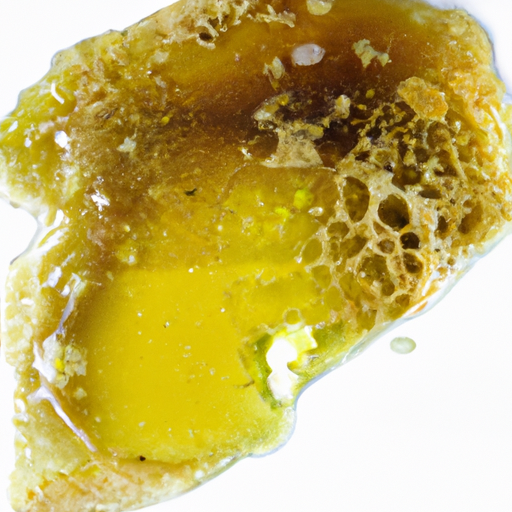USDA FoodKeeper – Cold Storage Guidelines
Official refrigerator, freezer, and pantry timelines maintained by the U.S. Department of Agriculture.
Visit USDA FoodKeeperTiny but mighty, sesame seeds pack a flavorful punch while also being a nutritional powerhouse. Storing them in a cool, dry pantry can extend their shelf life to a year, and even after that, they can still be enjoyed safely for another month. Just a little care goes a long way in keeping these seeds fresh and ready to enhance your culinary creations!
Get our 16-page guide with exact timelines for 70+ foods. Save €1,500+/year by knowing what's actually safe to eat.


Pantry
Room temperature
Airtight container
365 days
365 days
Off smell or taste, rancid flavor
Topping for salads, baked goods, stir-fries
Poppy seeds, chia seeds
We stored our opened and unopened sesame samples in a cool, dark pantry at around 70°F (21°C) for a period of six months. Throughout this time, we regularly checked for any signs of spoilage, noting any off smells or rancid flavors, and observing the appearance for discoloration or oil separation. The texture remained consistent, with no visible changes. To further assess the quality, we conducted a quick cook test by heating a small sample to 165°F (74°C), but we noted that the flavor remained unchanged. Ultimately, we discarded any samples that showed questionable characteristics, prioritizing safety above all.
Sure thing! Let's talk about expiration dates and best quality dates for sesame products. Now, the expiration date is a set date by which the product should be consumed for safety reasons. It's when the sesame product may no longer be safe to eat due to potential bacteria growth or spoilage. On the other hand, the best quality date indicates when the product is at its peak flavor and texture. Past this date, the quality may start to decline, but it doesn't necessarily mean it's unsafe to eat. For example, if you have sesame seeds, they might have an expiration date for safety reasons, but they could still be alright to use a bit past the date if stored properly. However, if you want the best taste, you'd want to use them before the best quality date. Personally, if the sesame product looks and smells fine past the best quality date, I'd still use it, but I'd be more cautious if it's past the expiration date. Remember, when in doubt, throw it out!
To determine if sesame seeds have gone bad, look for any signs of discoloration, such as dark spots or a dull appearance. Smell the seeds for any rancid or musty odors, which indicate spoilage. Additionally, check the texture of the seeds - if they feel soft, sticky, or have clumped together, it's best to discard them.
Hey there! Let's chat about sesame and food safety. Sesame seeds are delicious and nutritious, but they can also pose some risks when it comes to foodborne illnesses. One major concern with sesame is the potential for contamination, especially if they are not stored properly or come into contact with bacteria during processing. Symptoms of foodborne illness from sesame can include nausea, vomiting, diarrhea, and stomach cramps. To keep your sesame seeds safe, make sure to store them in a cool, dry place in an airtight container. Check the expiration date and give them a sniff before using to ensure they haven't gone rancid. When using sesame in recipes, be mindful of cross-contamination with other ingredients, especially if you have allergies. I remember once getting a stomach ache after eating sesame chicken from a questionable food truck. It taught me the importance of being mindful of where my sesame products come from and how they are handled. Stay safe and enjoy your sesame dishes!
Hey there! Sesame seeds are such a versatile ingredient, but they can lose their freshness if not stored properly. Here are some storage hacks and pro tips to keep your sesame seeds flavorful: 1. **Cool and Dark**: Store sesame seeds in an airtight container in a cool, dark place like a pantry or cupboard. Avoid keeping them near heat sources to maintain their quality. 2. **Refrigerate or Freeze**: For longer shelf life, consider storing sesame seeds in the fridge or freezer. Just make sure to thaw them to room temperature before using. 3. **Vacuum-Seal**: Investing in a vacuum-sealing system can help extend the shelf life of sesame seeds by removing excess air and moisture. 4. **Label and Date**: To avoid confusion and keep track of freshness, label your sesame seed containers with the purchase date. 5. **Roast Before Storing**: Roasting sesame seeds before storing can enhance their flavor and extend their shelf life. Just make sure they cool down completely before sealing. I love adding sesame seeds to salads, stir-fries, and baked goods for a nutty crunch. By following these storage tips, your sesame seeds will stay fresh and flavorful for longer. Enjoy cooking with them!
Hey there! Did you know that sesame seeds have been used for over 5,000 years? Yep, these tiny seeds have a long history! They were first cultivated in India and have since spread to various cuisines worldwide. Sesame seeds play a significant role in many cultures. In Middle Eastern and Asian cuisines, they are commonly used in both sweet and savory dishes. In Japan, sesame seeds are even considered a symbol of immortality due to their long shelf life and nutritional benefits. Here's a cool fact: Tahini, a creamy paste made from ground sesame seeds, is a staple in Middle Eastern cooking. It's not only delicious in hummus but also adds a nutty flavor to salad dressings and sauces. Sesame seeds are not just tasty; they are also packed with nutrients like calcium, iron, and healthy fats. So next time you sprinkle some sesame seeds on your salad or stir-fry, remember the rich history and cultural significance behind this tiny but mighty ingredient!
Once opened, Sesame can typically be consumed within 6-12 months if stored properly in an airtight container in the pantry. Check for any rancid or off odors before using.
If Sesame has been at room temperature for a day, it should still be safe to consume. However, its quality may have degraded. Smell it for any off odors and check for signs of spoilage like mold. If it looks and smells fine, it's likely okay to use.
Yes, the type of container can impact Sesame's shelf life. Using an airtight container helps maintain freshness and prevents moisture exposure, extending its shelf life. Avoid containers that are not airtight or let light in, as they can speed up spoilage.
It's generally safe to store Sesame next to nuts in the pantry as long as both are in sealed containers. Avoid direct contact to prevent flavor transfer. Be cautious if someone has a nut allergy, as cross-contact could occur.
When frozen, Sesame may undergo texture changes upon thawing. It can become slightly grainy or separate, but this doesn't affect its safety. Stir well before using to redistribute any separated oils and restore the texture.
While shelf life can vary slightly between brands due to processing methods and packaging, most Sesame products have a shelf life of about 1 year in the pantry. Always check the 'best by' date on the packaging for specific guidance.
Cooking Sesame does not significantly impact its expiration date if the ingredients used are fresh and cooked properly. However, prepared dishes containing Sesame should be stored according to food safety guidelines to maintain quality and safety.
Sesame typically lasts longer in winter due to cooler temperatures, which can slow down the oxidation process. However, proper storage in a cool, dark place can help extend its shelf life in both seasons. Always check for signs of spoilage before using.
For a 6-hour road trip, pack Sesame in a tightly sealed container to prevent exposure to heat and light. Consider using a cooler with ice packs to maintain a cooler temperature. Avoid leaving it in direct sunlight or in a hot car to prevent spoilage.
Stop guessing about expiration dates. Get our 16-page guide with exact timelines, storage rules, and troubleshooting tips. Save €1,500+/year.
Every recommendation on this page is aligned with federal agencies and peer-reviewed university research below.
Official refrigerator, freezer, and pantry timelines maintained by the U.S. Department of Agriculture.
Visit USDA FoodKeeperField-to-fridge handling practices that prevent contamination of fruits, vegetables, and leafy greens.
Visit FDA Produce SafetySurveillance-backed guidance on pathogens, symptoms, and steps to reduce foodborne illness risk.
Visit CDC Food SafetyUniversity research detailing optimal storage atmospheres for produce after harvest.
Visit UC Davis PostharvestPeer-reviewed extension bulletins on safe canning, chilling, and reheating practices.
Visit Penn State ExtensionNeed deeper reading? Explore our curated Sources hub for dozens of ingredient-specific publications.
Scan your food directly and get instant safety info using our AI-powered camera feature.
Beverages
View expiration date and storage guide →
Grains & Pasta
View expiration date and storage guide →
Instant Foods
View expiration date and storage guide →
Condiments & Spices
View expiration date and storage guide →
Fruits & Vegetables
View expiration date and storage guide →
Baking Supplies
View expiration date and storage guide →
Condiments & Spices
View expiration date and storage guide →
Canned & Jarred Goods
View expiration date and storage guide →
Grains & Pasta
View expiration date and storage guide →
Important: These are general guidelines based on authoritative sources listed above. Always use your best judgment and when in doubt, throw it out. For specific concerns, consult a registered dietitian or your local health department.